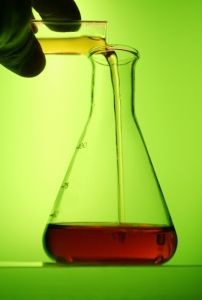Question:
What are the components of a protein lysis buffer and what are their primary functions?
The Protein Man Says:
Following up on what we have discussed in a previous post, identifying a suitable protein lysis buffer system may vary from one case to another depending on your target protein and what you wish to accomplish. Thus, a suitable buffer system may necessitate the use of various reagents which may include salts such as sodium chloride, potassium chloride and ammonium sulfate and detergents such as sodium dodecyl sulfate or SDS, deoxycholate and Triton X-100.
 In addition, there are some other reagents that can also be used in the preparation of the appropriate buffer system. For example, metal ions, ligands and glycerol can be added to the buffer solution to increase protein solubility and stability while metal chelators such as EDTA and EGTA can be used to reduce oxidation damage and chelate metal ions. Reducing agents such as DTT, DTE and 2-Mercaptoethanol can also be added to reduce oxidation damage caused by the presence of cysteine residues.
In addition, there are some other reagents that can also be used in the preparation of the appropriate buffer system. For example, metal ions, ligands and glycerol can be added to the buffer solution to increase protein solubility and stability while metal chelators such as EDTA and EGTA can be used to reduce oxidation damage and chelate metal ions. Reducing agents such as DTT, DTE and 2-Mercaptoethanol can also be added to reduce oxidation damage caused by the presence of cysteine residues.
A suitable cocktail of protease inhibitors can also be used to control unwanted proteolysis that may reduce your overall yield. Protease inhibitors are best added to the lysis buffer immediately before use since most of them are unstable in aqueous environments. For best results, consider using aprotinin, benzamidine and PMSF for inhibiting serine proteases, EDTA and EGTA for metallo proteases, leupeptin for cysteine and serine proteases and Pepstatin-A for aspartic proteases.
In addition to choosing the right protein lysis buffer system and the reagents that you will use to keep your target proteins soluble and active, you also need to take the pH of the buffer system into account. Most experiments are conducted under pH conditions that mimic biological conditions (pH 7.4). This wouldn't present any problems if your target protein is stable under this condition. If not, then you should find the ideal conditions to keep your proteins happy.
You can get the results you need by using the most appropriate buffer system, adding the correct reagents, and conducting your experiments under the right conditions. Remember these things and you can do it right.
Image By - hberends






